Kushal Lakhotia
Sid
The Llama 3 Herd of Models
Jul 31, 2024Abstract:Modern artificial intelligence (AI) systems are powered by foundation models. This paper presents a new set of foundation models, called Llama 3. It is a herd of language models that natively support multilinguality, coding, reasoning, and tool usage. Our largest model is a dense Transformer with 405B parameters and a context window of up to 128K tokens. This paper presents an extensive empirical evaluation of Llama 3. We find that Llama 3 delivers comparable quality to leading language models such as GPT-4 on a plethora of tasks. We publicly release Llama 3, including pre-trained and post-trained versions of the 405B parameter language model and our Llama Guard 3 model for input and output safety. The paper also presents the results of experiments in which we integrate image, video, and speech capabilities into Llama 3 via a compositional approach. We observe this approach performs competitively with the state-of-the-art on image, video, and speech recognition tasks. The resulting models are not yet being broadly released as they are still under development.
A Large-Scale Evaluation of Speech Foundation Models
Apr 15, 2024Abstract:The foundation model paradigm leverages a shared foundation model to achieve state-of-the-art (SOTA) performance for various tasks, requiring minimal downstream-specific modeling and data annotation. This approach has proven crucial in the field of Natural Language Processing (NLP). However, the speech processing community lacks a similar setup to explore the paradigm systematically. In this work, we establish the Speech processing Universal PERformance Benchmark (SUPERB) to study the effectiveness of the paradigm for speech. We propose a unified multi-tasking framework to address speech processing tasks in SUPERB using a frozen foundation model followed by task-specialized, lightweight prediction heads. Combining our results with community submissions, we verify that the foundation model paradigm is promising for speech, and our multi-tasking framework is simple yet effective, as the best-performing foundation model shows competitive generalizability across most SUPERB tasks. For reproducibility and extensibility, we have developed a long-term maintained platform that enables deterministic benchmarking, allows for result sharing via an online leaderboard, and promotes collaboration through a community-driven benchmark database to support new development cycles. Finally, we conduct a series of analyses to offer an in-depth understanding of SUPERB and speech foundation models, including information flows across tasks inside the models, the correctness of the weighted-sum benchmarking protocol and the statistical significance and robustness of the benchmark.
SUPERB-SG: Enhanced Speech processing Universal PERformance Benchmark for Semantic and Generative Capabilities
Mar 14, 2022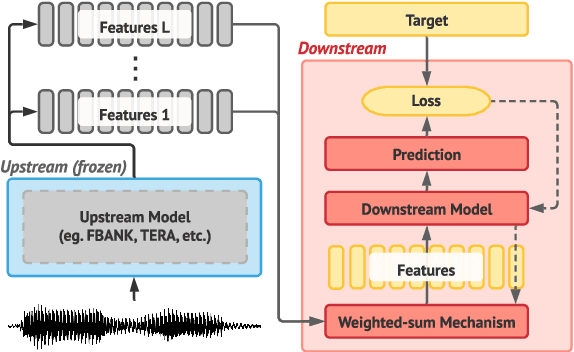
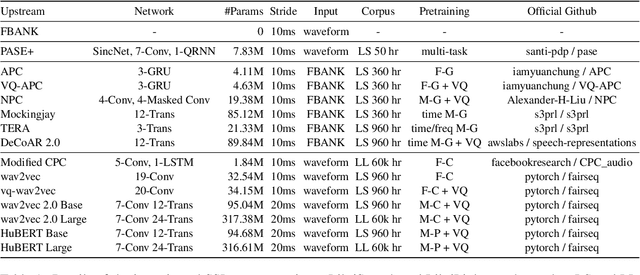
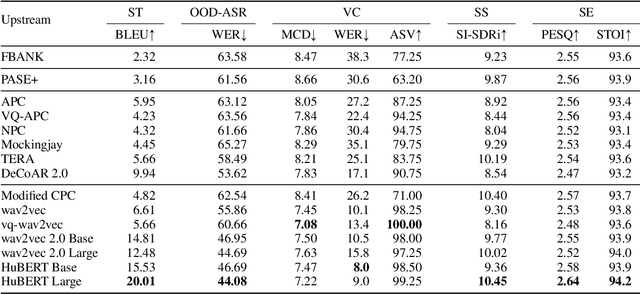
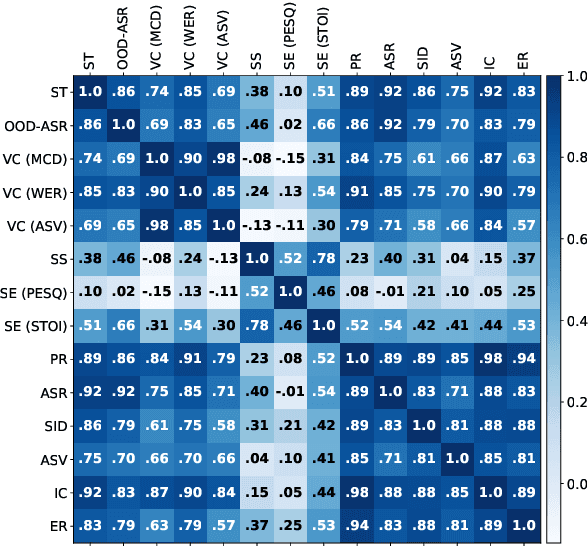
Abstract:Transfer learning has proven to be crucial in advancing the state of speech and natural language processing research in recent years. In speech, a model pre-trained by self-supervised learning transfers remarkably well on multiple tasks. However, the lack of a consistent evaluation methodology is limiting towards a holistic understanding of the efficacy of such models. SUPERB was a step towards introducing a common benchmark to evaluate pre-trained models across various speech tasks. In this paper, we introduce SUPERB-SG, a new benchmark focused on evaluating the semantic and generative capabilities of pre-trained models by increasing task diversity and difficulty over SUPERB. We use a lightweight methodology to test the robustness of representations learned by pre-trained models under shifts in data domain and quality across different types of tasks. It entails freezing pre-trained model parameters, only using simple task-specific trainable heads. The goal is to be inclusive of all researchers, and encourage efficient use of computational resources. We also show that the task diversity of SUPERB-SG coupled with limited task supervision is an effective recipe for evaluating the generalizability of model representation.
textless-lib: a Library for Textless Spoken Language Processing
Feb 15, 2022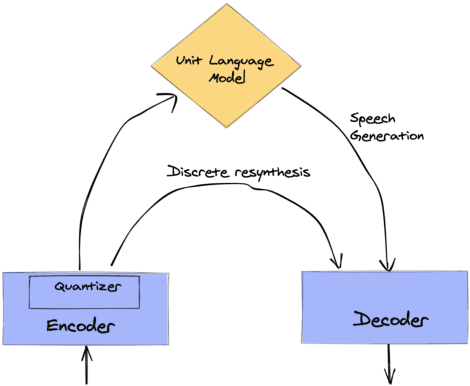
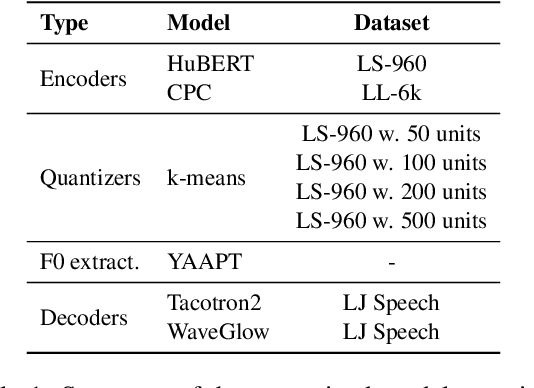

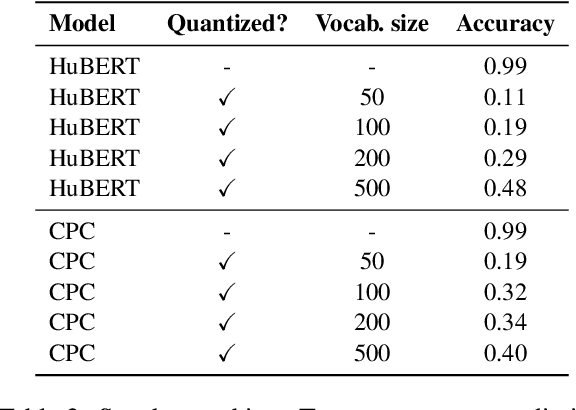
Abstract:Textless spoken language processing research aims to extend the applicability of standard NLP toolset onto spoken language and languages with few or no textual resources. In this paper, we introduce textless-lib, a PyTorch-based library aimed to facilitate research in this research area. We describe the building blocks that the library provides and demonstrate its usability by discuss three different use-case examples: (i) speaker probing, (ii) speech resynthesis and compression, and (iii) speech continuation. We believe that textless-lib substantially simplifies research the textless setting and will be handful not only for speech researchers but also for the NLP community at large. The code, documentation, and pre-trained models are available at https://github.com/facebookresearch/textlesslib/ .
Learning Audio-Visual Speech Representation by Masked Multimodal Cluster Prediction
Jan 05, 2022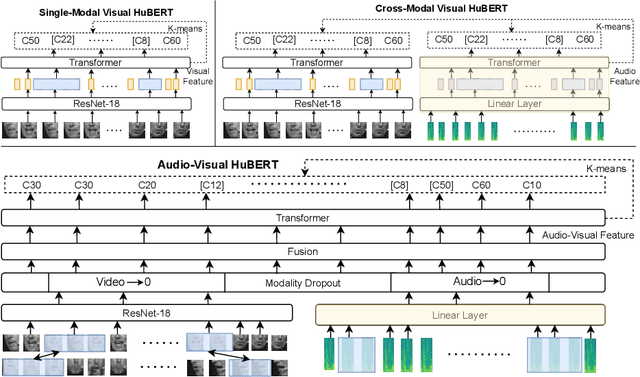
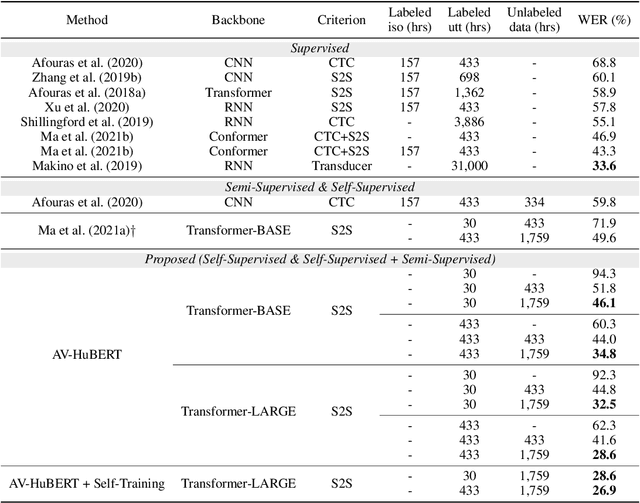


Abstract:Video recordings of speech contain correlated audio and visual information, providing a strong signal for speech representation learning from the speaker's lip movements and the produced sound. We introduce Audio-Visual Hidden Unit BERT (AV-HuBERT), a self-supervised representation learning framework for audio-visual speech, which masks multi-stream video input and predicts automatically discovered and iteratively refined multimodal hidden units. AV-HuBERT learns powerful audio-visual speech representation benefiting both lip-reading and automatic speech recognition. On the largest public lip-reading benchmark LRS3 (433 hours), AV-HuBERT achieves 32.5% WER with only 30 hours of labeled data, outperforming the former state-of-the-art approach (33.6%) trained with a thousand times more transcribed video data (31K hours). The lip-reading WER is further reduced to 26.9% when using all 433 hours of labeled data from LRS3 and combined with self-training. Using our audio-visual representation on the same benchmark for audio-only speech recognition leads to a 40% relative WER reduction over the state-of-the-art performance (1.3% vs 2.3%). Our code and models are available at https://github.com/facebookresearch/av_hubert
XLS-R: Self-supervised Cross-lingual Speech Representation Learning at Scale
Nov 19, 2021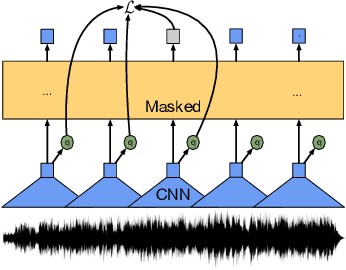
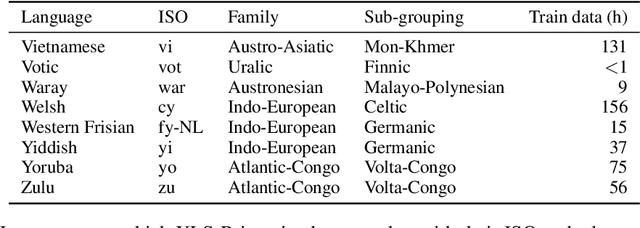
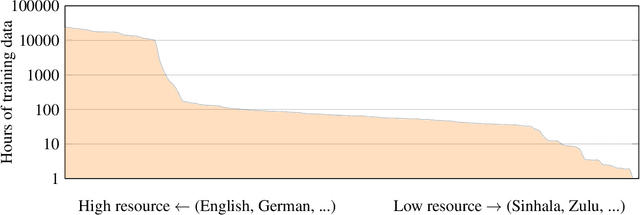

Abstract:This paper presents XLS-R, a large-scale model for cross-lingual speech representation learning based on wav2vec 2.0. We train models with up to 2B parameters on nearly half a million hours of publicly available speech audio in 128 languages, an order of magnitude more public data than the largest known prior work. Our evaluation covers a wide range of tasks, domains, data regimes and languages, both high and low-resource. On the CoVoST-2 speech translation benchmark, we improve the previous state of the art by an average of 7.4 BLEU over 21 translation directions into English. For speech recognition, XLS-R improves over the best known prior work on BABEL, MLS, CommonVoice as well as VoxPopuli, lowering error rates by 14-34% relative on average. XLS-R also sets a new state of the art on VoxLingua107 language identification. Moreover, we show that with sufficient model size, cross-lingual pretraining can outperform English-only pretraining when translating English speech into other languages, a setting which favors monolingual pretraining. We hope XLS-R can help to improve speech processing tasks for many more languages of the world.
Salient Phrase Aware Dense Retrieval: Can a Dense Retriever Imitate a Sparse One?
Oct 13, 2021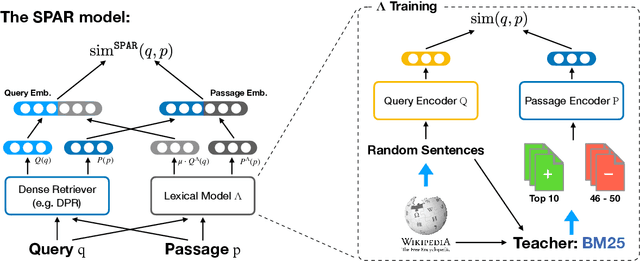
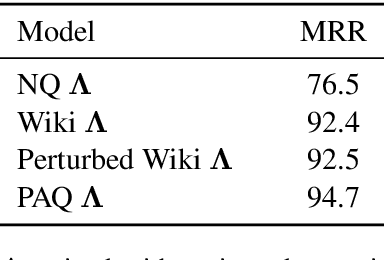
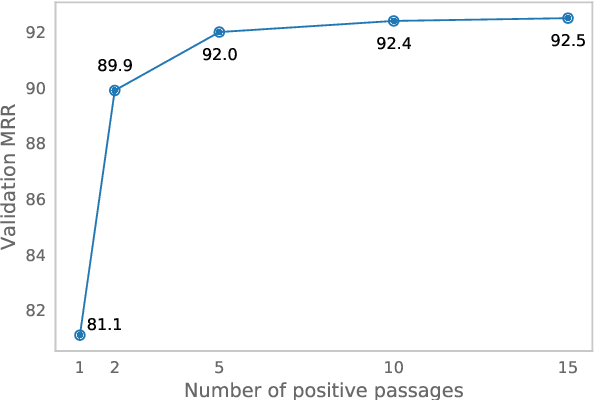
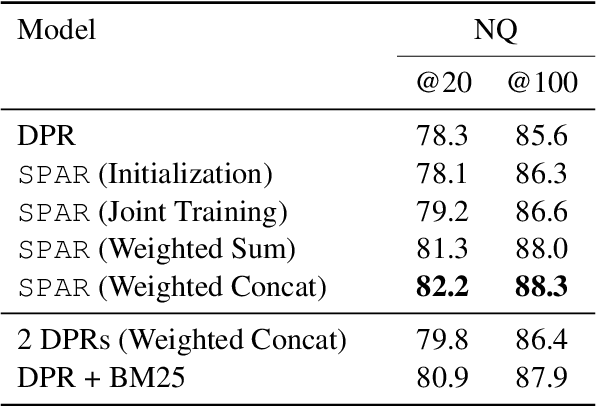
Abstract:Despite their recent popularity and well known advantages, dense retrievers still lag behind sparse methods such as BM25 in their ability to reliably match salient phrases and rare entities in the query. It has been argued that this is an inherent limitation of dense models. We disprove this claim by introducing the Salient Phrase Aware Retriever (SPAR), a dense retriever with the lexical matching capacity of a sparse model. In particular, we show that a dense retriever {\Lambda} can be trained to imitate a sparse one, and SPAR is built by augmenting a standard dense retriever with {\Lambda}. When evaluated on five open-domain question answering datasets and the MS MARCO passage retrieval task, SPAR sets a new state of the art for dense and sparse retrievers and can match or exceed the performance of more complicated dense-sparse hybrid systems.
Text-Free Prosody-Aware Generative Spoken Language Modeling
Sep 07, 2021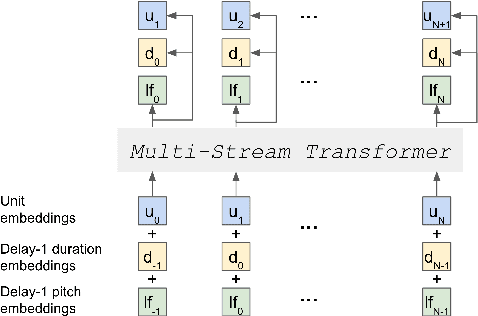
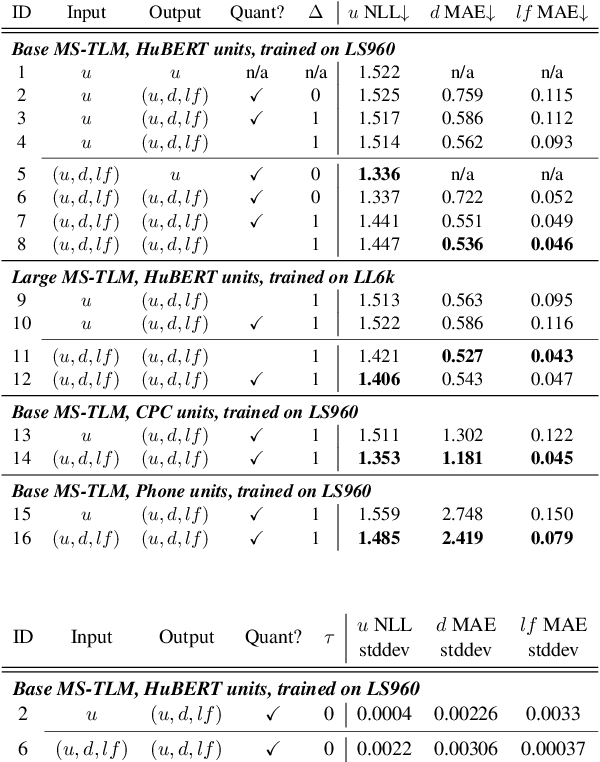
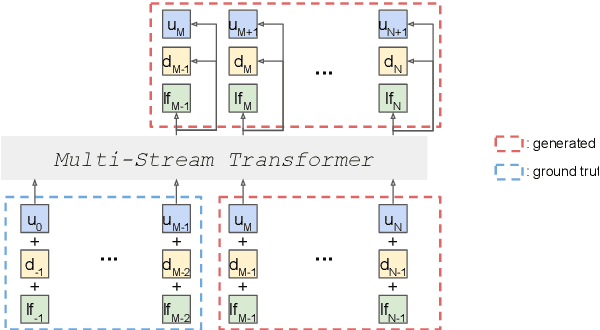

Abstract:Speech pre-training has primarily demonstrated efficacy on classification tasks, while its capability of generating novel speech, similar to how GPT-2 can generate coherent paragraphs, has barely been explored. Generative Spoken Language Modeling (GSLM) (Lakhotia et al., 2021) is the only prior work addressing the generative aspects of speech pre-training, which replaces text with discovered phone-like units for language modeling and shows the ability to generate meaningful novel sentences. Unfortunately, despite eliminating the need of text, the units used in GSLM discard most of the prosodic information. Hence, GSLM fails to leverage prosody for better comprehension, and does not generate expressive speech. In this work, we present a prosody-aware generative spoken language model (pGSLM). It is composed of a multi-stream transformer language model (MS-TLM) of speech, represented as discovered unit and prosodic feature streams, and an adapted HiFi-GAN model converting MS-TLM outputs to waveforms. We devise a series of metrics for prosody modeling and generation, and re-use metrics from GSLM for content modeling. Experimental results show that the pGSLM can utilize prosody to improve both prosody and content modeling, and also generate natural, meaningful, and coherent speech given a spoken prompt. Audio samples can be found at https://speechbot.github.io/pgslm.
Domain-matched Pre-training Tasks for Dense Retrieval
Jul 28, 2021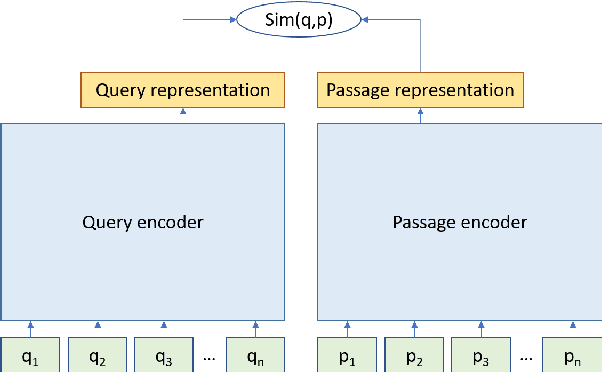
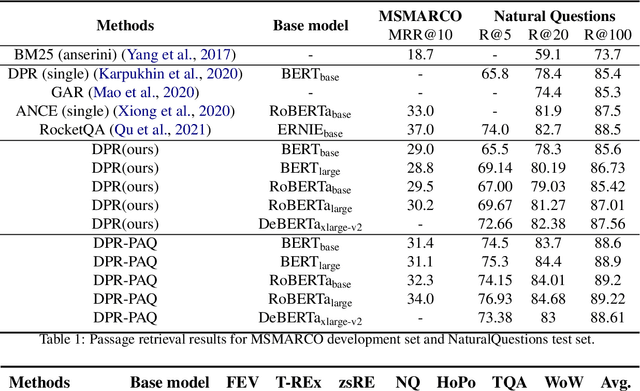

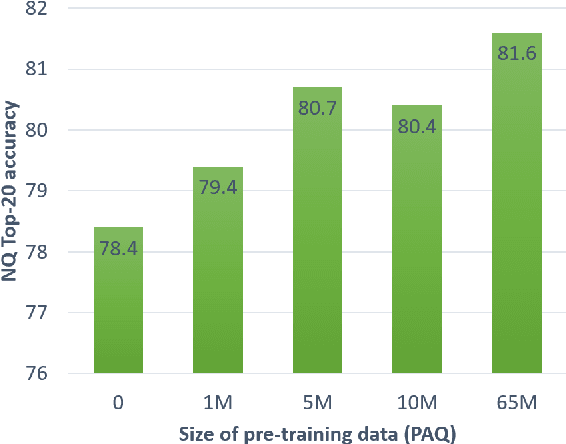
Abstract:Pre-training on larger datasets with ever increasing model size is now a proven recipe for increased performance across almost all NLP tasks. A notable exception is information retrieval, where additional pre-training has so far failed to produce convincing results. We show that, with the right pre-training setup, this barrier can be overcome. We demonstrate this by pre-training large bi-encoder models on 1) a recently released set of 65 million synthetically generated questions, and 2) 200 million post-comment pairs from a preexisting dataset of Reddit conversations made available by pushshift.io. We evaluate on a set of information retrieval and dialogue retrieval benchmarks, showing substantial improvements over supervised baselines.
HuBERT: Self-Supervised Speech Representation Learning by Masked Prediction of Hidden Units
Jun 14, 2021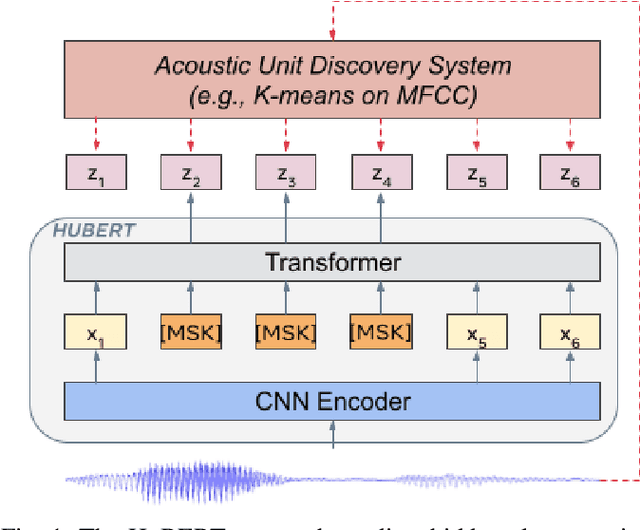
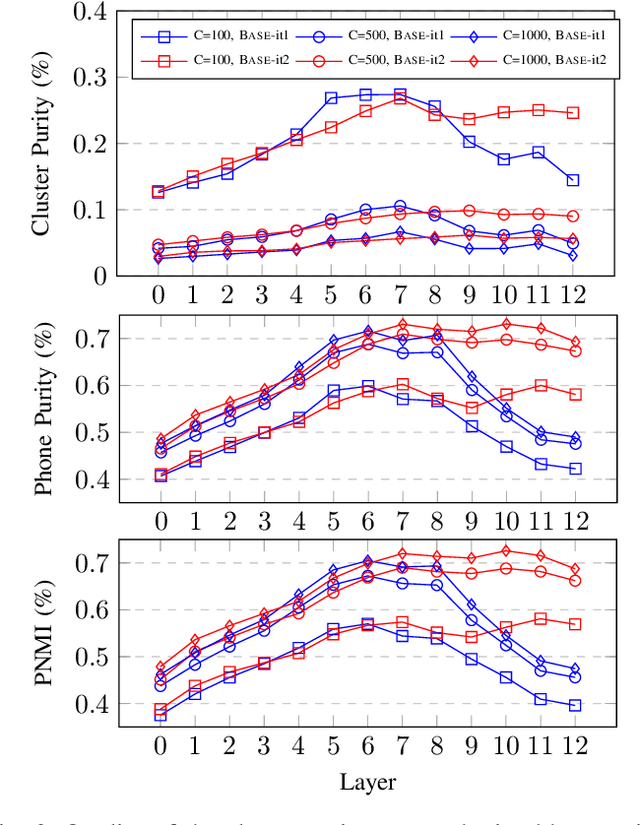

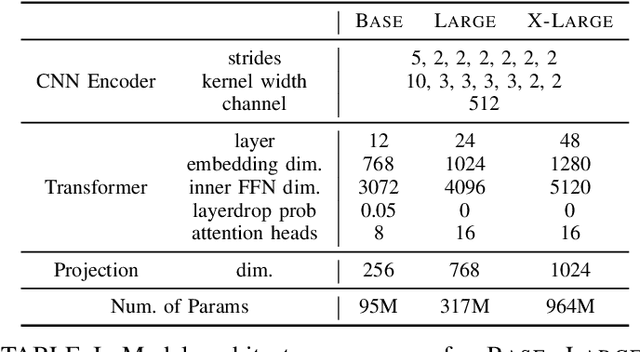
Abstract:Self-supervised approaches for speech representation learning are challenged by three unique problems: (1) there are multiple sound units in each input utterance, (2) there is no lexicon of input sound units during the pre-training phase, and (3) sound units have variable lengths with no explicit segmentation. To deal with these three problems, we propose the Hidden-Unit BERT (HuBERT) approach for self-supervised speech representation learning, which utilizes an offline clustering step to provide aligned target labels for a BERT-like prediction loss. A key ingredient of our approach is applying the prediction loss over the masked regions only, which forces the model to learn a combined acoustic and language model over the continuous inputs. HuBERT relies primarily on the consistency of the unsupervised clustering step rather than the intrinsic quality of the assigned cluster labels. Starting with a simple k-means teacher of 100 clusters, and using two iterations of clustering, the HuBERT model either matches or improves upon the state-of-the-art wav2vec 2.0 performance on the Librispeech (960h) and Libri-light (60,000h) benchmarks with 10min, 1h, 10h, 100h, and 960h fine-tuning subsets. Using a 1B parameter model, HuBERT shows up to 19% and 13% relative WER reduction on the more challenging dev-other and test-other evaluation subsets.
 Add to Chrome
Add to Chrome Add to Firefox
Add to Firefox Add to Edge
Add to Edge